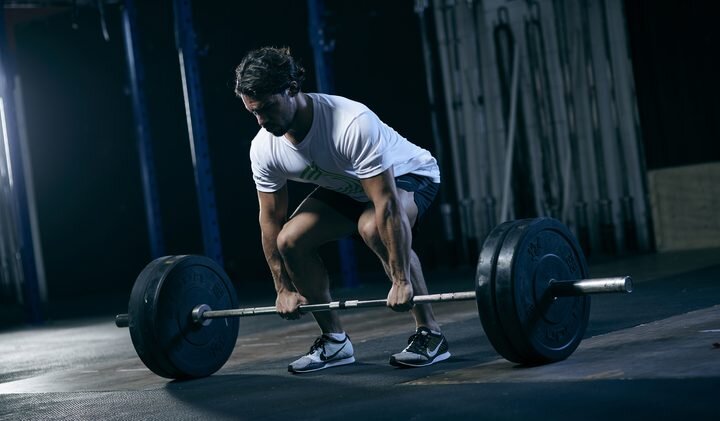How to Avoid Hip Pain during Deadlifts
Foam Roll, Dynamic Warm-up & Glute Activation
A good way to reduce or eliminate hip pain during deadlifts is to give your body some TLC before the workout even begins. Foam rolling the surrounding hip musculature is a great way to reduce tissue tension and improve circulation before getting started. Focus on the glutes, quadriceps, hamstrings and IT band to start. A dynamic warm-up routine is designed to further prime the body for movement. The goal of the dynamic warm-up is to produce a light sweat and increase core body temperature, which will improve flexibility and reduce the likelihood of injury. Lastly, if deadlifts are on your schedule today, start by performing a few glute-specific exercises for activation. A few good examples are bridge variations, lateral band walks and band-resisted clamshells.
Hip Hinge vs Squat
When performing a conventional deadlift on a straight bar, many coaches will teach the importance of squat depth and high-chest posture prior to the lift. These tips are not wrong by any means, unless of course you are dealing with hip pain which limits your ability to achieve this position. Another way to maximize strength gains during a deadlift, while avoiding hip pain is by utilizing a hip hinge. By maintaining a higher, more neutral hip position prior to the lift, the femoral head is less likely to come in contact with the acetabulum (hip socket) in such a way that would irritate the joint.
Vertical Shin + Tibial ER
Once you have found a comfortable position for the hip, it is time to create tension in the glutes to generate force through the correct muscle groups. Some healthy tips are to maintain vertical shins, without allowing the knees to pass over the feet. Grip the floor with your feet and rotate the knees slightly outward (tibial external-rotation) to increase glute activation prior to the lift.
Now that you are properly warmed-up, have found a pain-free starting position and generated some torque/tension in your body, there is one remaining step before lift-off. Don’t forget to ensure proper upper body engagement & core activation as well, to avoid straining the lower back.
Try these tips for yourself during your next deadlift session!
If you continue to have hip pain, click the button below to inquire about our FREE Discovery Sessions.
Take advantage of this opportunity to meet 1-on-1 with one of the experts at Restore Physical Therapy, in order to determine if PT is the next step towards reaching your goals!





